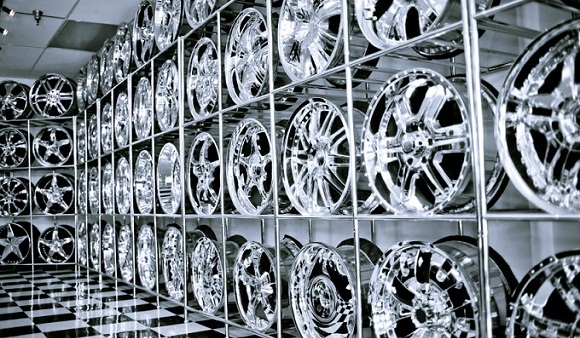
Oooh, shiny. (and good housekeeping, too!)
On September 19, 2012, the US Environmental Protection Agency published a final review amending the National Emission Standards for Hazardous Air Pollutants: Hard and Decorative Chromium Electroplating and Chromium Anodizing Tanks (40 CFR Part 63, Subpart N). In addition to revised emission limits for total chromium and other changes, the rule amendment introduced requirements for housekeeping practices to minimize fugitive emissions. These housekeeping procedures must be implemented within six months after publication of the rule, or by March 19, 2013.
Required housekeeping procedures include:
- storage of substances containing hexavalent chromium in closed containers in an enclosed area, and transport of these substances in closed containers, only;
- drip trays, containment or on-site treatment as controls for dripping of plating bath solution during dragout;
- splash guards for electroplating and anodizing tanks;
- prompt (i.e., within one hour) cleanup and containment of spills of hexavalent chromium substances;
- routine cleaning and stabilization of storage and work surfaces, walkways, and other surfaces that could become contaminated with hexavalent chromium;
- installation of barriers between plating or anodizing equipment and any buffing, grinding or polishing operations; and
- proper storage, disposal, recovery or recycling of chromium-containing wastes.
The revised rule lowers chromium emission limits and surface tension limits for new and existing sources. For existing large hard chromium sources, the chromium emissions limit has been lowered from 0.015 milligrams per dry standard cubic meter to 0.011 mg/dscm. New large hard chrome plating sources will need to achieve a chromium emissions limit of 0.006 mg/dscm. Existing small hard chrome platers must meet a chromium emissions limit of 0.015 mg/dscm, while new small sources in this category must meet the 0.006 mg/dscm limit.
In the decorative chrome electroplating category, the chromium emissions limits have been lowered to 0.007 mg/dscm for existing sources and to 0.006 mg/dscm for new sources. The same limits will apply to existing and new chromium anodizing sources, respectively.
For electroplating or anodizing tanks in any category that utilize a chemical fume suppressant with a wetting agent, compliance with the emissions limit can be demonstrated by maintaining surface tension at or below 40 dynes per centimeter, if measured with a stalagmometer or 33 dynes/cm if measured with a tensiometer.
The compliance date for these revised emission limits (or surface tension limits) is September 19, 2014.
More information on the National Emissions Standard for Chromium Electroplating is available here. If you need further guidance or assistance, please contact T. Cozzie Consulting.
